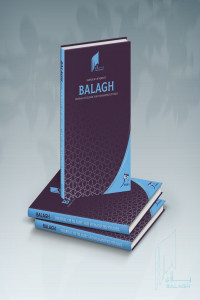Jawi Writing in Al-Quran and Al-Sunnah Subject at Secondary School; Issues and Challenges
Jawi Writing in Al-Quran and Al-Sunnah Subject at Secondary School; Issues and Challenges
Issues, Challenges Jawi, PQS.,
___
- Abd Rahim Abd Rashid (2001). Nilai-nilai Murni dalam Pendidikan. Kuala Lumpur: Cergas (M) Sdn. Bhd.
- Abdul Hamid, A. F., & Abdullah, N. (2009). Penggunaan Tulisan Jawi Dalam Kalangan Mahasiswa Pengajian Islam: Kajian di Institut Pengajian Tinggi Awam Tempatan. Jurnal At-Tamadun, 4.
- Abdullah & Ainon. (1997). Daya Pengaruh dan Perubahan Sikap. Kuala Lumpur: Utusan Publications & Distributors Sdn.
- Abu Bakar, B., Mad Siadid, M. N., Suwairi, A. J., Urusli, S., Deris, A., Abd Wahab, M. Y., & Abu Bakar, M. (2012). Persepsi Pelajar Terhadap Keberkesanan Program j-QAF dalam Kalangan Pelajar Tingkatan Satu – Satu kajian kes. Seminar Kebangsaan Majlis Dekan Pendidikan IPTA 2012. Retrieved from http://www.fp.utm.my/ePusatSumber/listseminar/medc2012/pdf/85.pdf.
- Adnan. (1987). Pertalian antara Sikap Pelajar Terhadap Mata Pelajaran Tertentu dan Pencapaian dalam Peperiksaan (Thesis), Universiti Malaya, Kuala Lumpur.
- Ahmad, A. (2014). Kaedah Pembelajaran Jawi: Peringkat asas. Kuala Lumpur: Perpustakaan Negara Malaysia.
- Aiken, L. R. (1976). Update on Attitude and Other Effective Variables in Learning Mathematics, Attitudes a Handbook of Social Psychology. Review of Educational Research, 46(2), 293–311.
- Ali, A. R. & Abdullah, B. (2015) Falsafah pendidikan Jawi dalam Memperkasakan Tamadun Islam di Malaysia. Fakulti Kontemporari Islam, Universiti Sultan Zainal Abidin, Malaysia.
- Ali, A. R. (2012). Proceeding from Seminar Penyelidikan Jawi Dan Manuskrip Melayu 2012: Cabaran Program Pemulihan Jawi J-QAF dalam Memperkasakan Tranformasi Ejaan Jawi yang disempurnakan. Shah Alam: Pusat Pemikiran dan Kefahaman Islam, UiTM.
- Awang Mohamad Amin. (1989). Tulisan Jawi ke Arah Penggunaan yang Lebih Meluas dan Berkesan. Jurnal Dewan Bahasa, 33(12), 937–941.
- Azman Wan Chik. (1986). Kaedah amali Hayati: Satu Pendekatan Mengajar Pendidikan Islam. Kuala Lumpur: Dewan Bahasa dan Pustaka.
- Biggs, J. B. (1991). Teaching for Learning: The View from Cognitive Psychology. Hawthorn: The Australian Council for Educational Research Ltd.
- Che Pee Saad. (1993). Paper presented at Seminar Pendidikan Islam dan Bahasa Arab. Bangi: Maktab Perguruan Islam
- Başlangıç: 2021
- Yayıncı: Karabük Üniversitesi
Criminalization controls in Islamic criminal jurisprudence
Younus Saeed HUSSEİN, Khaled Zin Alabdin DERSHWİ
Separation Between Spouses Due to Contagious Diseases and its Evidence
Hossam Moussa Mohamed SHOUSHA, Radhwan Hasan ALI
Linguistic identity in Palestine between the danger of loss and the inevitability of survival
السيد محمد سالم, رجب إبراهيم أحمد عوض
Contemporary Trends in Criticism of Companions: An Analytical Descriptive Study
Mohamed Amine HOCİNİ, Fouad BOUNAMA
Jawi Writing in Al-Quran and Al-Sunnah Subject at Secondary School; Issues and Challenges
Amrina Rasyada Binti KAMARUZAMAN, Nik Md Saiful Azizi B Nik ABDULLAH
Models for Some Judicial Systems Since the Creation of Mankind to a Good Mission Wilderness
